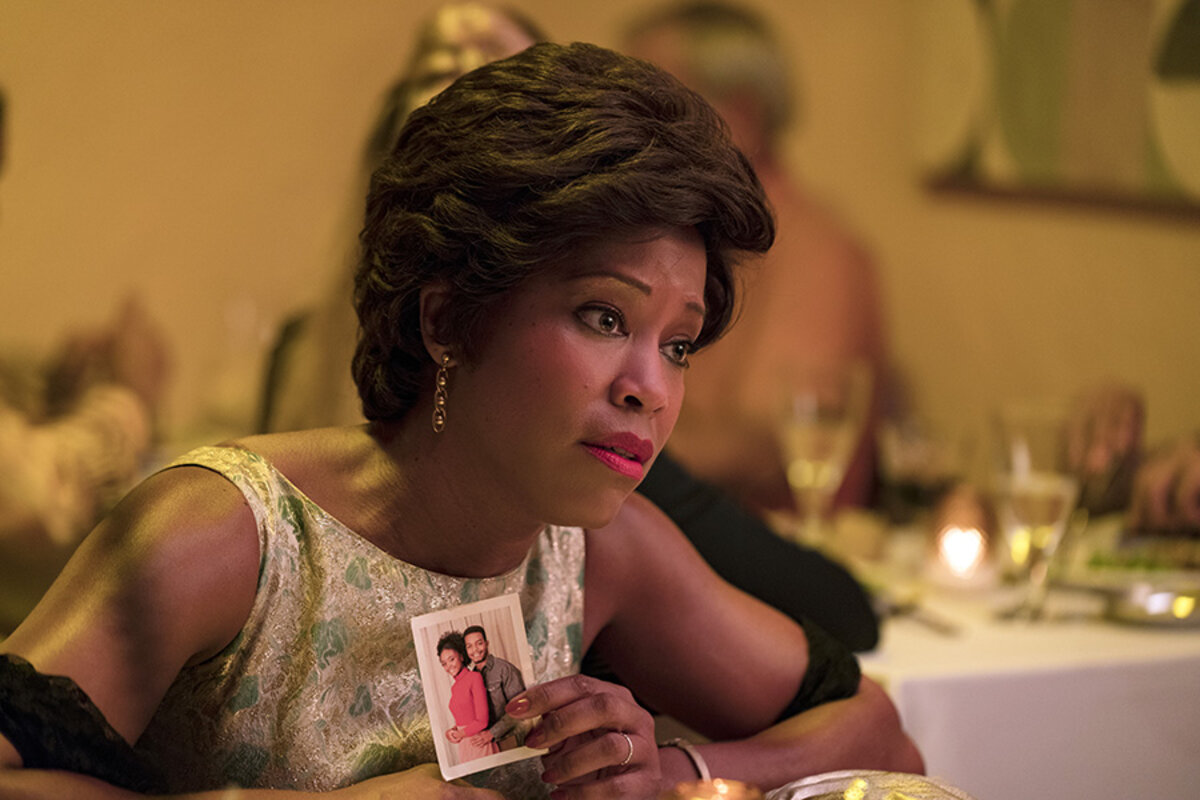James Baldwin finds new generation of fans
Loading...
Thanks to “If Beale Street Could Talk,” a recent movie based on James Baldwin’s novel of the same name, the author’s work is getting a renewed profile and perhaps attracting new readers to his work.
The attention is well deserved. Some three decades after his passing, Baldwin’s books endure as part of the literary canon – a judgment affirmed when The Library of America, which publishes definitive editions of classic works, brought out a three-volume collection of his fiction and essays.
The “Beale Street” film, which has attracted rave reviews, stars KiKi Lane as Tish Rivers, who struggles to help free her lover Fonny (Stephan James) when he’s wrongly accused of rape. The main characters are African-American, but the movie, like its source material, resonates with universal appeal.
Why We Wrote This
The film "If Beale Street Could Talk" raises awareness of other stories by the writer, whose poignant and abiding subject was his identity as a black man in a white society.
The Hollywood version of “Beale Street,” directed by Barry Jenkins of “Moonlight” fame, has some incredible plot twists, and Baldwin’s own life had its unlikely turns, too.
He was born in Harlem in 1924, the oldest son of nine children. As his younger siblings were born, Baldwin recalled, he would carry them with one hand and hold a book in the other. He tried his hand at preaching, following in the footsteps of his minister stepfather, eventually leaving the church and channeling his gift for language into literature instead. In novels, short stories, and essays, Baldwin’s abiding subject was his identity as a black man in white society, which had special gravity during the civil rights movement he helped advance.
Baldwin was one of the civil rights leaders interviewed by novelist and poet Robert Penn Warren in 1964, and those exchanges have just been published for the first time in “Free All Along,” recently reviewed in The Monitor. Not surprisingly, when Warren visited Baldwin, one of the first things he noticed was Baldwin’s eyes. “He is not looking at you now,” Warren noted, “or talking at you, at all: his eyes are fixed on something over yonder.”
Baldwin had large eyes that seemed to underscore how sharply he noticed everything. That genius for perception is evident in his novels and short stories, but it seems most vivid in his essays, which are masterpieces of expository prose. Perhaps his most famous essay is the widely anthologized “Stranger in the Village,” in which Baldwin recalls staying in a tiny Swiss village that had, apparently, never been visited by a black person before. Baldwin spent much of his life in Europe, primarily in France, to escape the racism in the US, but as “Stranger” makes clear, the sense of exclusion he felt in his native country tended to follow him.
Baldwin, who died in 1987, was a marvelously subtle writer. In “Stranger,” for example, he describes a community overwhelmed by snow, and the reader gradually senses that the uniformly white landscape points as well to the ubiquitous whiteness of the culture. Similarly, the physically compromised pilgrims who trek to the village’s hot spring, celebrated for its healing waters, seem spiritually compromised, too – limited by their lack of empathy for anyone different from them.
"If I sat in the sun for more than five minutes,” Baldwin wrote, “some daring creature was certain to come along and gingerly put his fingers on my hair, as though he were afraid of an electric shock, or put his hand on my hand, astonished that the color did not rub off. In all of this, in which it must be conceded there was the charm of genuine wonder and in which there was certainly no element of intentional unkindness, there was yet no suggestion that I was human: I was simply a living wonder."
That pretty much exemplifies Baldwin’s tone of studious sanity; he speaks calmly and carefully, even when documenting the absurd, as if he’s trying to talk us all off a ledge.
That voice speaks to us still, an eloquent argument against the division of the times. See the “Beale Street” movie, then open one of Baldwin’s books and see why Toni Morrison concluded that his work "refuses summation... and invites contemplation instead."








